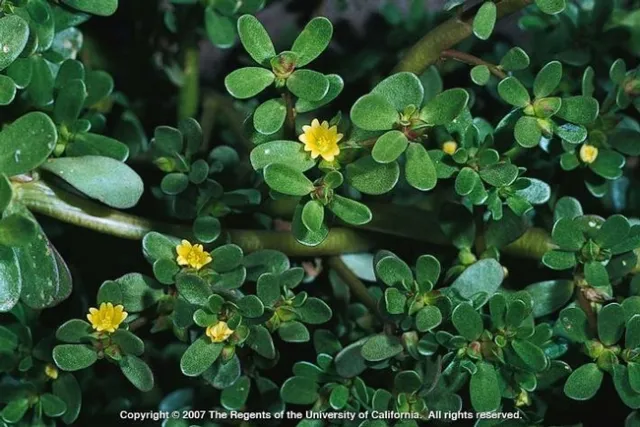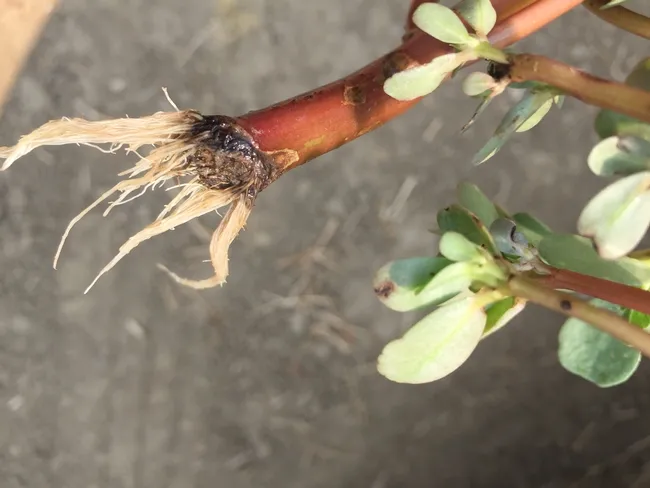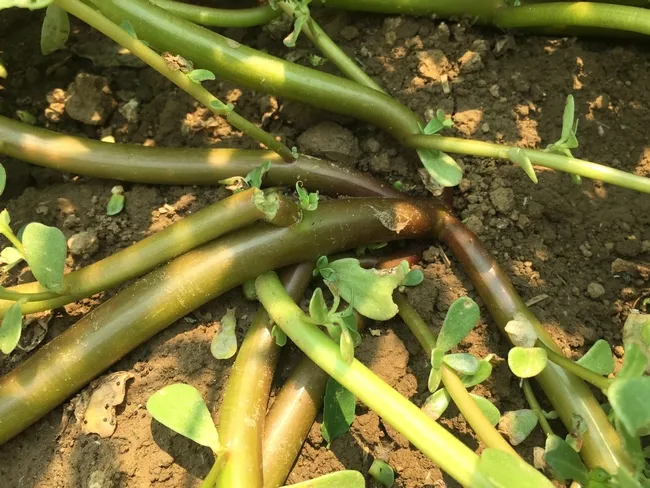Common purslane: weed it and eat it
This has been a big year for purslane at the UC Davis farm. Common purslane (Portulaca oleracea) is a succulent summer annual weed with fleshy leaves and rubbery-looking stems. Native to Eurasia, or maybe Africa, purslane arrived in the Americas with the first Europeans to settle here. It is a common weed in row crops worldwide.

Purslane is a tasty vegetable, either raw or cooked, and sometimes appears in farmer's markets and grocery stores. It is reported to be high in omega-3 fatty acids.
It's also a royal pain in the neck as a crop weed. Each plant produces thousands of tiny, long-lived seeds. The brittle stems make it difficult to pull or hoe, and stem fragments left on the soil will readily re-root. I once participated in a cultivation study in beans infested with purslane; rows which were mechanically cultivated ended up with more purslane than non-cultivated rows.


